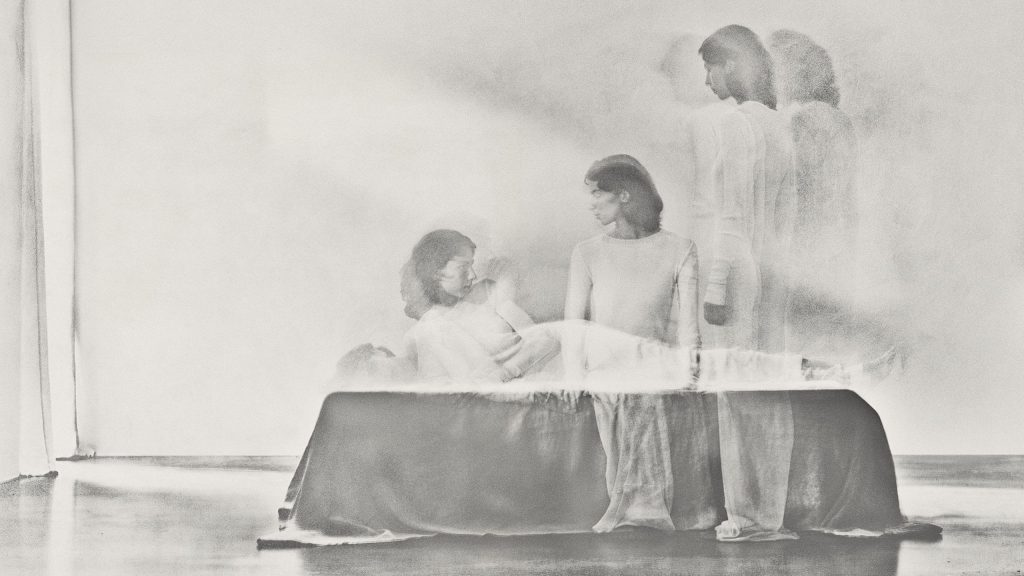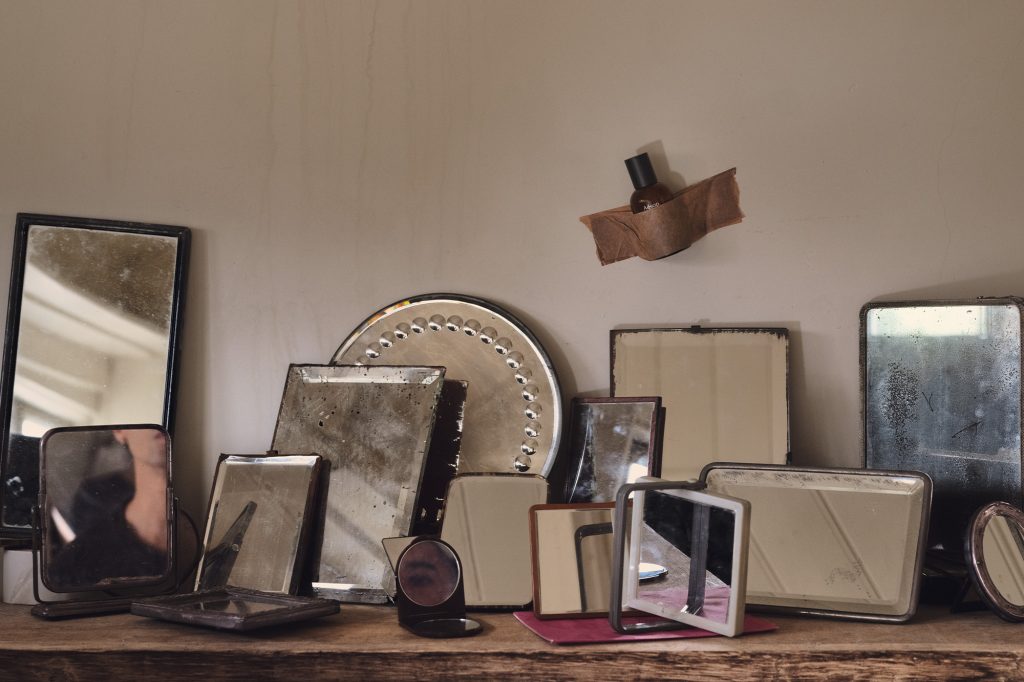
You’ve yet to meet a fragrance like Gloam Eau de Parfum. It’s named after the time of day that immediately follows sunset, and you’ve definitely noticed this particular phenomenon—where the sun has made its journey beyond the horizon, but it’s not quite nighttime yet. Now, Aesop’s long-term fragrance collaborator Barnabé Fillion has done the inconceivable: bottling that marvel.
As Gloam Eau de Parfum is the fifth installation of the Othertopias series, this is not the first time Fillion has achieved that feat. The Othertopias collection sees the nose’s endeavour to push the boundaries of perfumery by distilling the notions of byways and in-between states to create an unorthodox universe in the forms of fragrances.
The Othertopias Universe
Before Gloam, there were Miraceti, Karst, Erémia, and Eidesis—all impressive in their own right. The first three arrived as a trio in 2021, ushering in three worlds inspired by the stormy seas, salty air, and hushed jungles. But Aesop and Fillion didn’t stop there. With how individual each bottle is, they even went as far as developing specified personas that capture the ideal psyche of each scent’s wearer. The best part? Everything under Othertopias is genderless.
Miraceti, the eldest of all, is named after a star in a constellation. The blend combines spices, herbs, and resins, including extracts of chilli leaf, black pepper, and red seaweed. With all these nautical instances, Fillion draws to the conclusion that Miraceti is for the seafarers, the storytellers, and the idealists.
The middle child is Karst; it’s a moody but luminous scent that conjures an image of the seashore. The moniker comes from the realm of geology, so expect some facets of calcic and mineral notes. The top notes consist of fresh juniper and tart bergamot. To anchor this olfactive treat, it’s balanced with aromatics such as sage, cumin, and rosemary. As such, Fillion has determined the ideal Karst character: a pragmatist, a prospector, and an existentialist.
Continuing down this mercurial path of temperaments, the perfumer set out to concoct a fragrance that captures the sense of Mother Nature’s metropolitan reclamation. Created for the philosophers, the romantics and the people-watchers, Erémia will have you whelmed in the green notes of galbanum, mimosa, and grapefruit and sunny notes of yuzu, bergamot, and grapefruit. The result? A delicate waxy floral and powdery bouquet that will turn heads as you pass by.

In 2022, Aesop introduced Eidesis, the fourth scent offering in Othertopias, which is crafted for dreamers and visionaries. Transitioning into this, Fillion brought together two opposites—effervescence and potency—and infused petitgrain and frankincense with cedar and vetiver into Eidesis.
Reproducing Gloam in a Vial
Now, before the final flourish (and before we get ahead of ourselves), the collection crescendoes with the entrance of Gloam, a spicy and floral melange that will transport you to a realm where imagination takes the front seat. Musing on the idea of introspection, the floral and piquant perfume both envelops and elevates the wearer in a cloud of spicy warmth of copaiba and blooming sprays of orange flower, mimosa, and iris. In his latest ambitious exploit, Fillion has bottled reverie and quietude in one fell swoop. Keep reading for our interview with the perfume maker.
Barnabé Fillion shares his journey towards Gloam
What do dreams smell like to you?
To me, a fragrance that embodies a dream landscape should have rich florals, warm spice, and a soft, powdery base. We have captured these in Gloam—for me, the notes really have this ability to rouse the senses and enchant the mind.
What’s the idea behind the Othertopias collection?
This collection is about the study of interstitial space; it is a piece of research on the boundaries between real and imagined. The concept served as scaffolding for the development of these perfumes. They are an homage to the work of many philosophers and thinkers that have worked with the idea of these spaces that are relative to realities, and have this capacity to make us travel and unlock reveries.
What is the creative process like when you create a fragrance?
When I create a new perfume, my process really starts with the visual. Scent evokes associations, and creates images and patterns in the mind. I always start off with a blurry image which becomes more focused over time.
Once I’ve found the initial ingredients I want to work with for the concept, a crucial part of my creative process is to wear the fragrances on different textiles as well as my own skin, so I can smell them at different times of the day and over and over again to understand its effects in different contexts. It is a very circular process; each time you move a new ingredient may come to the surface, or maybe you notice another layer of complexity that continues to inspire and inform the whole procedure.
What about your personal experiences moulded your sense and preferences that leads to becoming the aesthete you are today?
I have synaesthesia—when I’m working on a fragrance, I’m not only thinking of refining the formula but also thinking of an image, and inside this image, I’m thinking about colour, texture, which I guess is very similar to an artist or a painter, or a music composer. And somehow this expression can be blurred, or blended or inverted.
As part of this, my journey into perfumery only really began to evolve when I was studying at a visual art school, and was specialising in photography. I used a Polaroid camera to take pictures of botanicals to reveal the ‘architecture of nature’—all the patterns and repetitive structures across the elements in nature. This was how I developed my interest in ingredients for fragrances. Even today when I create a perfume, I explore this same style of photography as inspiration.
Are there any ingredients you dislike that you’d avoid using in your creations?
I would never rule out any particular ingredient, because you never know how it might blend with something new, or how it might smell in certain contexts or on someone’s skin.
I do have favourite scents that I sometimes have to restrain myself from coming back to repeatedly. My all-time favourite smells are iris, mimosa, lilac, whiskey, and skin. I also love the smell of a forest, it’s like a wooden temple, and the smell of frankincense, especially during the Semana Santa in Seville, Spain.
What common misconceptions do people have about fragrances you would like to shatter?
I have always felt that limiting a perfume to a gender was reducing the expansion of the senses. We live in a world of progress where those limitations shouldn’t determine creativity. I look at ingredients with passion as instruments to compose a piece and I would never dare to target anything other than to tell a story that enriches your appreciation of your senses.
What is your advice for people who wish to find their signature scent?
It may sound obvious, but you need to wear a fragrance to know that it works for you. When I am working on a new formulation I always wear the fragrance on different scarves and textiles as well as on my skin, so I can smell the scarf again and again to understand the fragrance in a different way. The way a perfume smells on your scarf when it moves is amazing—it’s a huge inspiration to me.
It’s also good to have more than one fragrance in your collection—probably a minimum of three, depending on your personality—to be able to experience and understand each fragrance in different moods and contexts.
Gloam Eau de Parfum is available at Aesop stores and here.
